What the NBA and NHL—Bursting From Their Bubbles—Can Learn From MLB
If the NBA and NHL are looking for the key to smooth and successful seasons without the aid of a bubble, they should start in early August, a few days after a COVID-19 outbreak jeopardized the rest of the Major League Baseball season. That’s when the Marlins issued a directive to their traveling party.
Twenty positive tests—18 players and two coaches—had sidelined Miami for eight days and thrown the whole enterprise into question. Baseball couldn’t even get through its opening week. How could it possibly expect to stage a season amid a pandemic?
The Marlins had determined that no one had engaged in what club owner Derek Jeter called “salacious activity.” The players weren’t going to clubs; they were hanging out with one another, maskless, in the team hotel. So after they emerged from quarantine (with a brand-new, virus-free roster), the Marlins decided to forbid players from leaving their rooms at all.
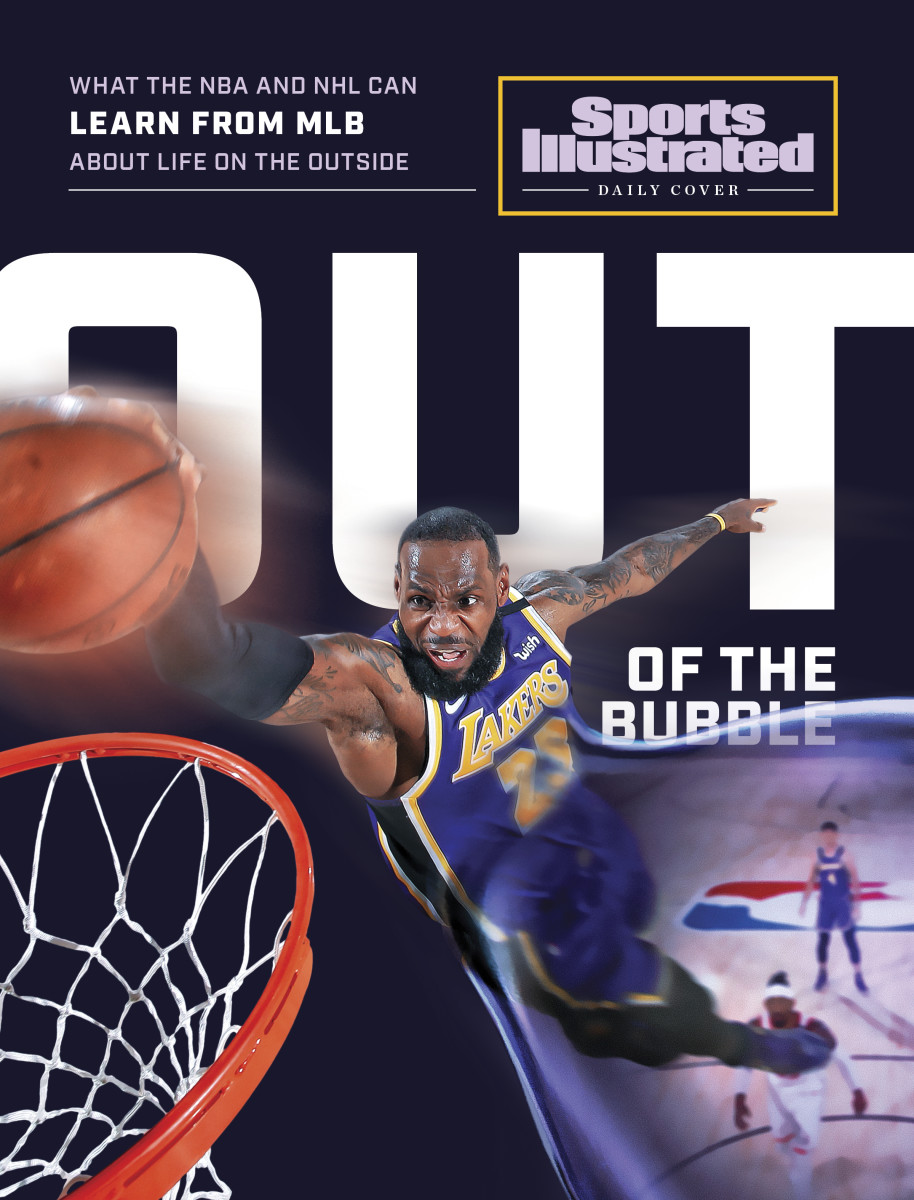
The team placed mass coffee and food orders and allowed players to collect their items, but otherwise enforced a strict isolation—down to a pair of guards stationed in the lobby.
The new rules were draconian, but there wasn’t much grumbling. The feeling around the team was: “We kind of had our chance and blew it,” says Richard Bleier, a relief pitcher who joined the club as one of the reinforcements.
The Marlins never had another positive test. In the wake of their outbreak—and a 17-person one not long after that sidelined the Cardinals for 16 days—MLB rethought many of the policies in its widely panned operations manual. Sept. 23, the day the playoff teams began their postseason quarantines, was the league’s 25th straight day without a positive player test. (Ironically, the only late-season issue MLB experienced was inside the bubble it constructed for the playoffs, when the Dodgers had to pull third baseman Justin Turner in the eighth inning of the deciding game of the World Series because of a just-returned positive test.) That playoff bubble trouble notwithstanding, over the course of the season, MLB had gone from fiasco to the sports gold standard for operating outside a bubble. By comparison, the NFL and college athletics have struggled.
The NBA and the NHL successfully completed playoffs in bubbles this summer and fall, but now both are attempting to stage seasons out in the real world. With the NBA’s having just tipped off on Tuesday and the NHL slated to drop puck in mid-January, Sports Illustrated asked people around MLB: What lessons should these leagues learn from baseball’s experience?
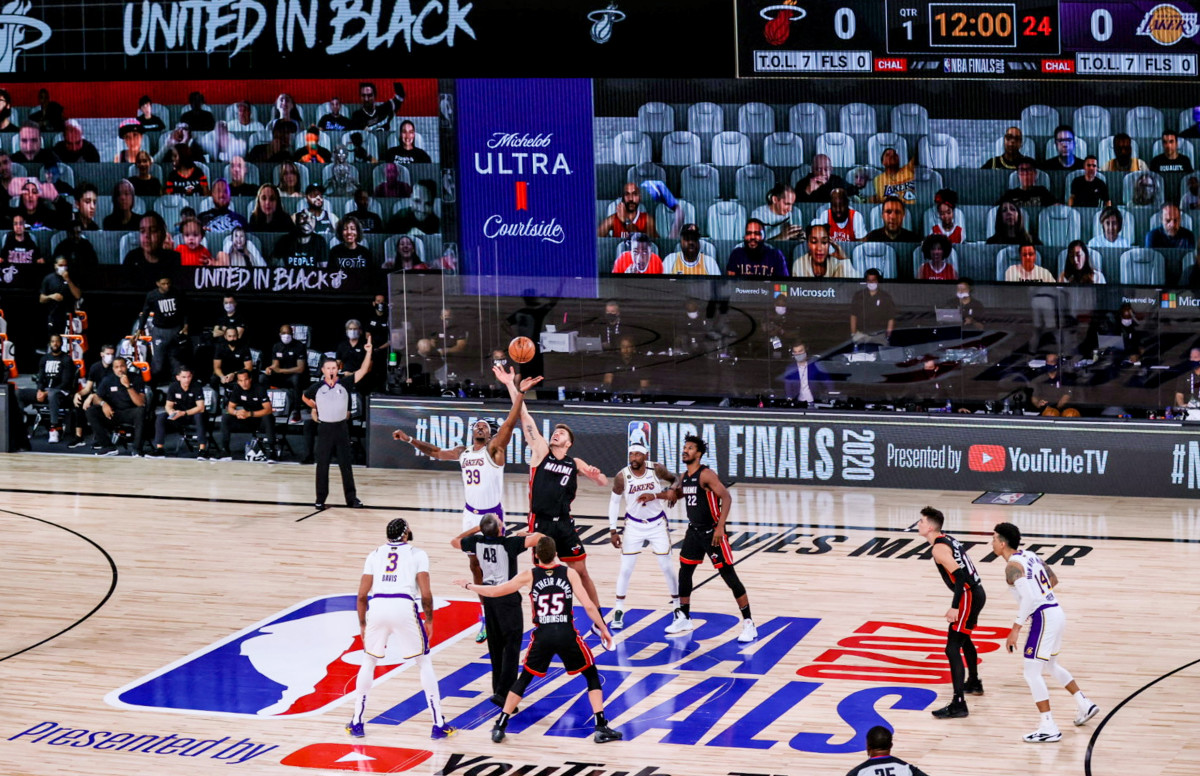
The most important rule MLB absorbed in the wake of the twin outbreaks: Be ready to rewrite the rules. “I think maybe baseball started on a path, and we found out we had to get even more disciplined,” says Brewers manager Craig Counsell.
At first, the league struggled to set up a system that worked. As players reported for July training camps, test results were often delayed by days, causing teams to call off workouts. On-field personnel were tested every other day, and in cases when results did not return for 48 hours, someone could be carrying—and spreading—the virus for nearly four days before knowing about it. Players began openly questioning whether the experiment would succeed. Nationals GM Mike Rizzo released a statement that read, in part, “Major League Baseball needs to work quickly to resolve issues with their process and their lab. Otherwise, Summer Camp and the 2020 Season are at risk.”
“I was an early dissenter,” Rizzo says now. “We were all learning at that time.”
The lab, in Utah, subcontracted with a second lab, in New Jersey. The results began coming back within 24 hours. The lesson here for basketball and hockey, veterans of the MLB campaign say, isn’t about testing protocols. The NBA and NHL know how to run tests and make rules; the NBA, for instance, issued teams an 134-page document laying out its protocols. And the NHL released its own updated guidelines on Tuesday. The lesson here is flexibility: When something doesn’t work, change it—fast.
Then Opening Day arrived, and with it the Marlins’ first positive. Miami played that game, in Philadelphia, and the next two, even though three more players tested positive before the third game. By the next morning, that number was 14.
At that point, MLB made the choice that saved the season: It threw up the stop sign. The Marlins’ games were postponed, as were the Phillies’. Eight hundred fifty miles northwest, in Milwaukee, the Cardinals’ catastrophe was unfolding. The team did not play any games after players began testing positive, but five days into the outbreak, St. Louis held a light workout. Two days later, three more tests came back positive.
“It went through our club like wildfire,” says manager Mike Shildt. “We had a quarantine of [five] days in Milwaukee and we came back and it stayed in one of the players’ systems for eight days and then we had a team workout and it went again! ... There was just so little cross-contamination between a couple of the pockets [of players]. I mean, minimal, minimal. And that's how people got it.”
MLB tightened the protocols. The initial manual read, “MLB will not formally restrict the activities of Covered Individuals when they are away from Club facilities, but will expect the Covered Individuals on each Club to ensure that they all act responsibly.” After the outbreaks, the league specifically encouraged players not to leave hotels on the road. It also required surgical masks rather than cloth ones and mandated that teams appoint a compliance officer to keep an eye on things. (The NBA has already required teams to assign a compliance officer; it has also ruled that, in their home markets, team personnel are barred from public spaces like bars, clubs and public gyms and that, on the road, they may eat at restaurants outside their hotel only if they have outdoor seating or private indoor rooms or are otherwise approved by the league and players’ union. The NHL has ruled out restaurants on the road altogether, requiring that all meals be served at the team hotel.)
Perhaps most critical was MLB’s willingness to adjust the schedule, down to the contours of the games: On July 31, the league and union agreed that doubleheader games would be seven innings each. The NBA and NHL have yet to say what would prompt a game to be postponed or canceled. Initially MLB believed it could forge ahead despite a few positive tests. After all, that was the point of having 28-man rosters and player pools of 60. But the two outbreaks clarified things: Going forward, any positive test automatically postponed that game.
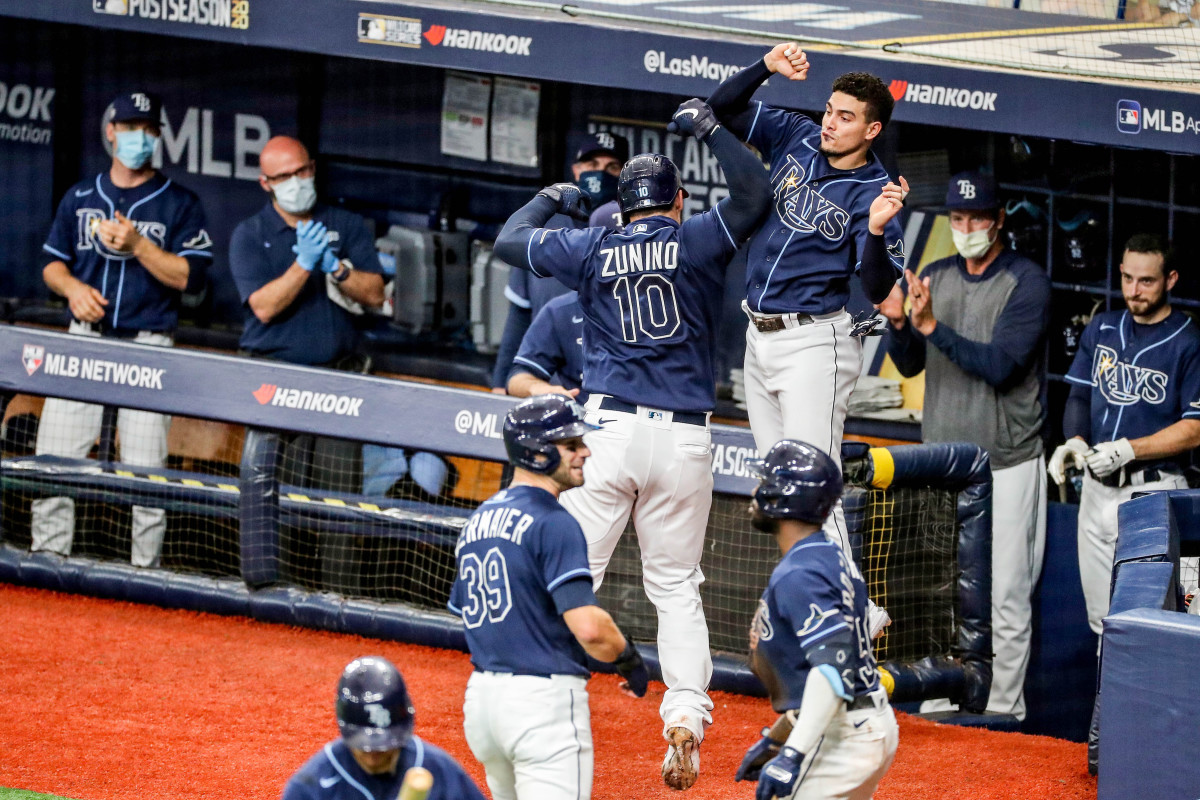
In some ways, baseball had it easy at first. In late July, most everything was closed. Between the lockdowns and the sport’s inherent grind—a game nearly every day, compared with basketball and hockey’s more spread-out schedules—no one had much opportunity to get into trouble. But that began to change by mid-August.
“As the season went on, hotels slowly started to get back into business,” says Abe Silvestri, the Giants’ director of team travel. “So now instead of showing up to a deserted hotel, we’re showing up to a place where the bar’s open. Instead of saying, ‘You can’t go to the bar,’ we tried to re-create our own.”
Often this meant calling ahead and asking the hotel to reserve an outdoor patio, wheel out TVs and beers and spread out a couple dozen chairs. That was usually good enough to keep everyone happy after games. But there was one day on the calendar that had Silvestri worried for weeks: an off-day in Phoenix on Aug. 31.
It was San Francisco’s only true, non-travel day off, and it was taking place in a state where cases had skyrocketed. A week or two before they flew down there, reliever Tony Watson approached Silvestri and asked whether they could come up with something fun to do. Enter what Silvestri calls “a Chuck E. Cheese for adults.”
He reserved a hotel banquet room and had it stocked with Pop-A-Shot, an indoor putting green, a pool table, ping-pong, cornhole, arcade games—everything he could think of. The Giants hired (and tested) a bartender. Yes, it was an indoor gathering, but everyone wore masks. And it reduced the risk that players might spend that day doing something more dangerous. There was also a psychological benefit: The top complaint around the sport this season was that the protocols eliminated most of what makes baseball fun—camaraderie, time with teammates, unstructured goofing off. For one day, the Giants gave their players back some of those moments. Silvestri calls it a highlight of the season.
The next day, the team flew to Denver and beat the Rockies 23–5. “Everyone was like, O.K., we have to do this every night now,” says Silvestri.
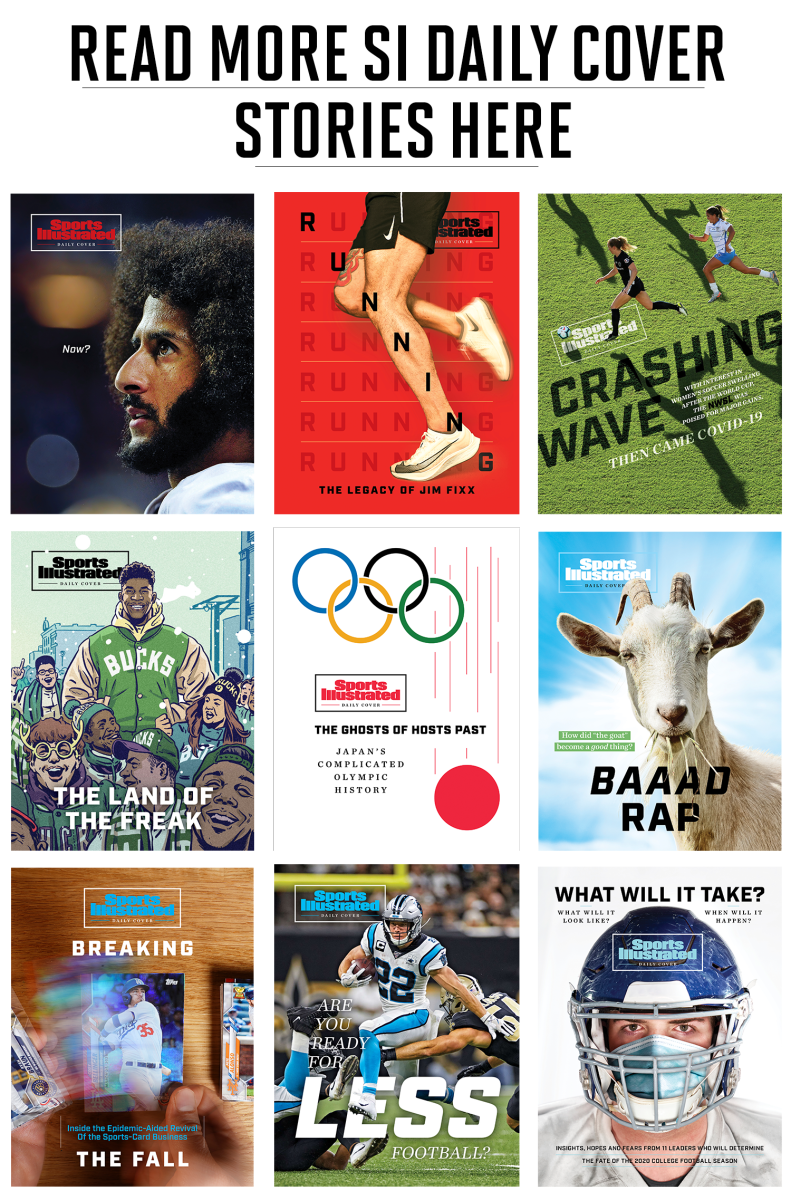
The whole season was an exercise in creativity. When the Cardinals were quarantined in Milwaukee, starter Jack Flaherty flipped his mattress against the wall and threw into it. Rays outfielder and eventual postseason darling Randy Arozarena tested positive just before Opening Day; he did 300 pushups a day until he was cleared to leave his apartment.
Teams held meetings remotely or outdoors. A Giants staffer saw curtains hanging between lockers in a European soccer locker room, so San Francisco installed them in its clubhouse in an attempt to keep the players apart. Many teams added second, auxiliary clubhouses to keep players six feet apart. The Red Sox went further: Their home clubhouse is crowded even without a pandemic, so they set the players up in fanless Fenway’s luxury suites, two to a box.
The league outlawed the traditional postseason champagne celebrations. The Rays instead popped Silly String and staged dance-offs. The Dodgers drank beers at the hotel.
“You have to treat it like you would anything in a baseball game,” says Silvestri. “Oh great, they brought in a lefty throwing 101 [mph]. Is everybody gonna sit in the dugout and throw up their middle finger? No, you have to figure out how to hit him.”
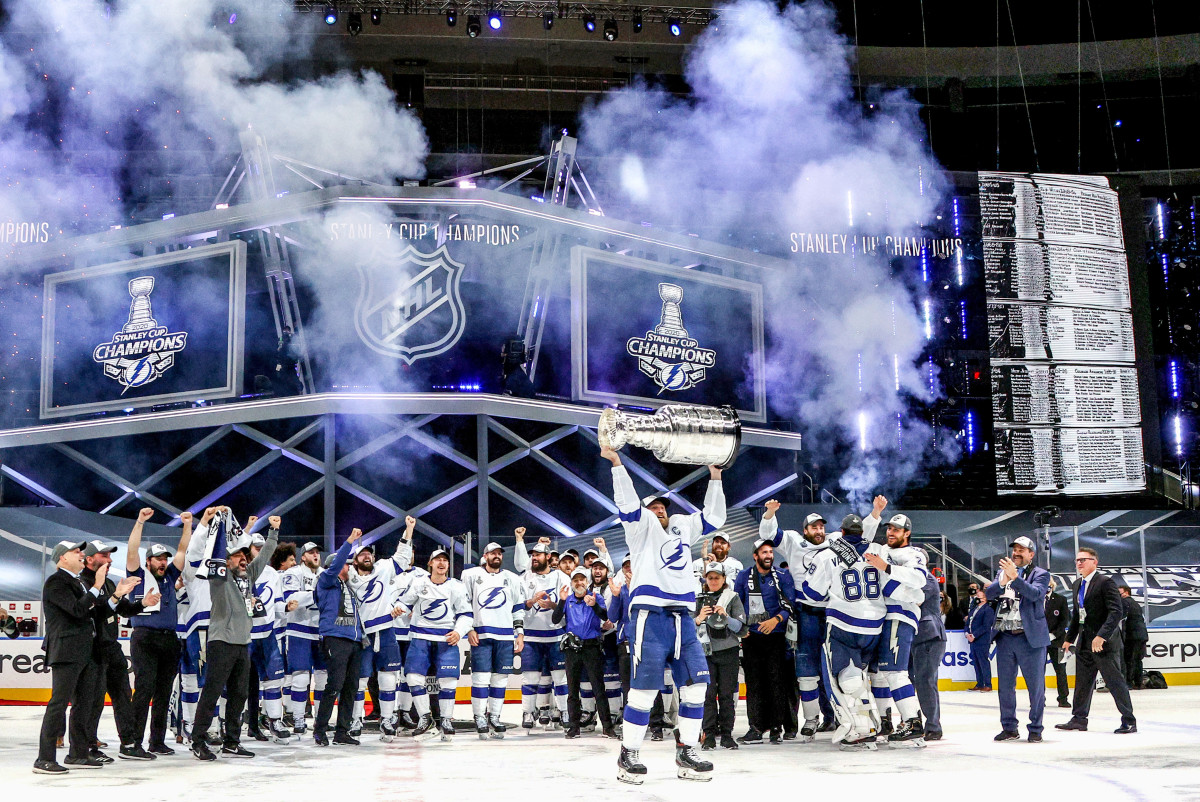
Now that we’ve all earned our degrees in epidemiology over the past nine months, it’s hard to remember how little we knew when this thing started. But as they reflect on the season, many people around baseball come to this conclusion: Control the right things, and really control them.
Diamondbacks manager Torey Lovullo looks back at his July self the way you might recall your kindergarten days. Back then, he says, he was scared of the wrong things.
“I'm getting on an airplane, [worrying about] sitting down; even though it's a chartered airplane, you just never know who was in that seat before you,” he says. “Getting on a bus, same circumstances. The hotel was a tough one for me. I remember we played an exhibition game in L.A. and walking into the hotel, I felt like the bogeyman was in there.”
Initially teams focused on such minutiae as spreading a towel on the dugout rail before leaning on it and removing balls from play after as few touches as possible. As it turned out, they should have been more worried about keeping guys apart during rain delays and enforcing mask-wearing in the clubhouse.
“As we went on in this, we just [realized]: Wearing a mask was the most effective thing you could do,” says Counsell. “I think the first weeks we were together, you kind of—I don't want to say it don’t believe it, but we needed some evidence of it, and I think as we went on, we just figured out, I need to wear a mask, and I think everybody got better at it, and I think that made us safer.”
One key was making sure that coaches and veterans modeled good behavior. Everyone risks illness if an All-Star refuses to wear a mask, but no one wants to be the one to ask him to put it on. Team officials reinforced early and often that the season would succeed only if everyone bought in.
“There's nothing magical about it,” says Twins manager Rocco Baldelli. “It's difficult work. It's difficult work by every single person involved: every player, every staff member. There was nothing easy about it. It's not an exciting thing to talk about. There's nothing fun about it. It's being smart and caring about the people next to you.”
And beyond. Clubs experimented with different messaging. For some, the idea that resonated was: We have to stay safe so we can make back some of the salary we’ve lost. For some, it was: We have to stay safe so we can give ourselves a chance to win the World Series. And for some, it was: We have to stay safe because we owe it to everyone who helped us get this far. And in some ways, stressing that shared responsibility might also have helped players get through the most bizarre period of their lives.
Before Game 3 of the World Series, Rays righty Charlie Morton grew emotional during a press conference discussing the season. “You care about your teammates,” he said. “You care about the staff that has spent tons of time trying to improve your game, the fans, non-uniform staff, especially in this environment this year, all the sacrifices that have been made by people that aren’t even directly affiliated with the game—like, security agents in hotels, the folks that work at the hotels here in quarantine, the clubhouse staff on the visiting side that haven’t been able to see their family for a month because they’re holed up and haven’t even been able to leave their rooms. When you look around and see what’s going on around you, it makes it all the more special. ... I’ll appreciate everyone who made this possible for as long as I live.”
MLB had to work hard to reach that point. The NBA and NHL would be wise to heed its lessons.
